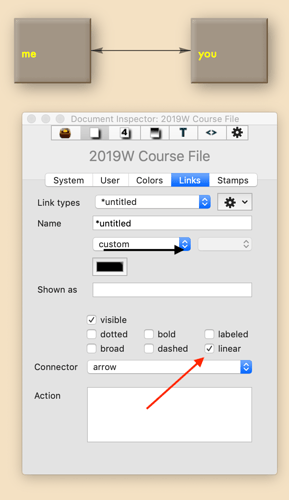(I was waiting to reply to this topic again until I had read the Links section of The Tinderbox Way. I’m not sure that has a direct bearing on the issue, but it helps to have a better grasp of the background to hypertext links generally.)
Ok, retreating to first principles, it is a fact of life (as previously stated) that a hypertext link is a connection from one entity to another entity, i.e. a directional link.
It is equally true that inTinderbox, connectors (the visual expression of links) are used to represent a whole range of relationships between notes, some of which are directional (eg parent to child) and some simply equivalent (e.g. sibling to sibling).
The problem seems to be that we only have a directional mechanism for representing all of these relationships, so that if we wish to express equivalence with, for instance, a headless arrow, there is an anomaly between the visual representation which may be true to the relationship but not to the underlying mechanism.
I am aware that there are many other ways of expressing equivalence, both visually (similar appearance, spatial proximity etc) and via other routes of data perception, but I don’t think it is unreasonable to suppose that there are circumstances in which an equivalence connector would be desirable.
As has been suggested, a pair of symmetrical connectors is one answer —and yes Mark, more flexible layout does help, a bit— but while this removes the anomaly between mechanism and relationship and satisfies the symmetrical aspect of equivalence, it may give a visually false message because it still suggests a dynamic reciprocal relationship between the two entities: either a feedback loop or a two-way road. Even a double-headed arrow sharing the same connector line falls foul of this objection.
I would plead strongly for a headless connector option. A headless connector is arguably no more a contradiction of the underlying link than an invisible connector. Another option for purists would be a pair of headless connectors, one of which is made invisible.
 . I thought it would be so obvious that I just did not see it. Thank you very much for the quick answer!
. I thought it would be so obvious that I just did not see it. Thank you very much for the quick answer!
